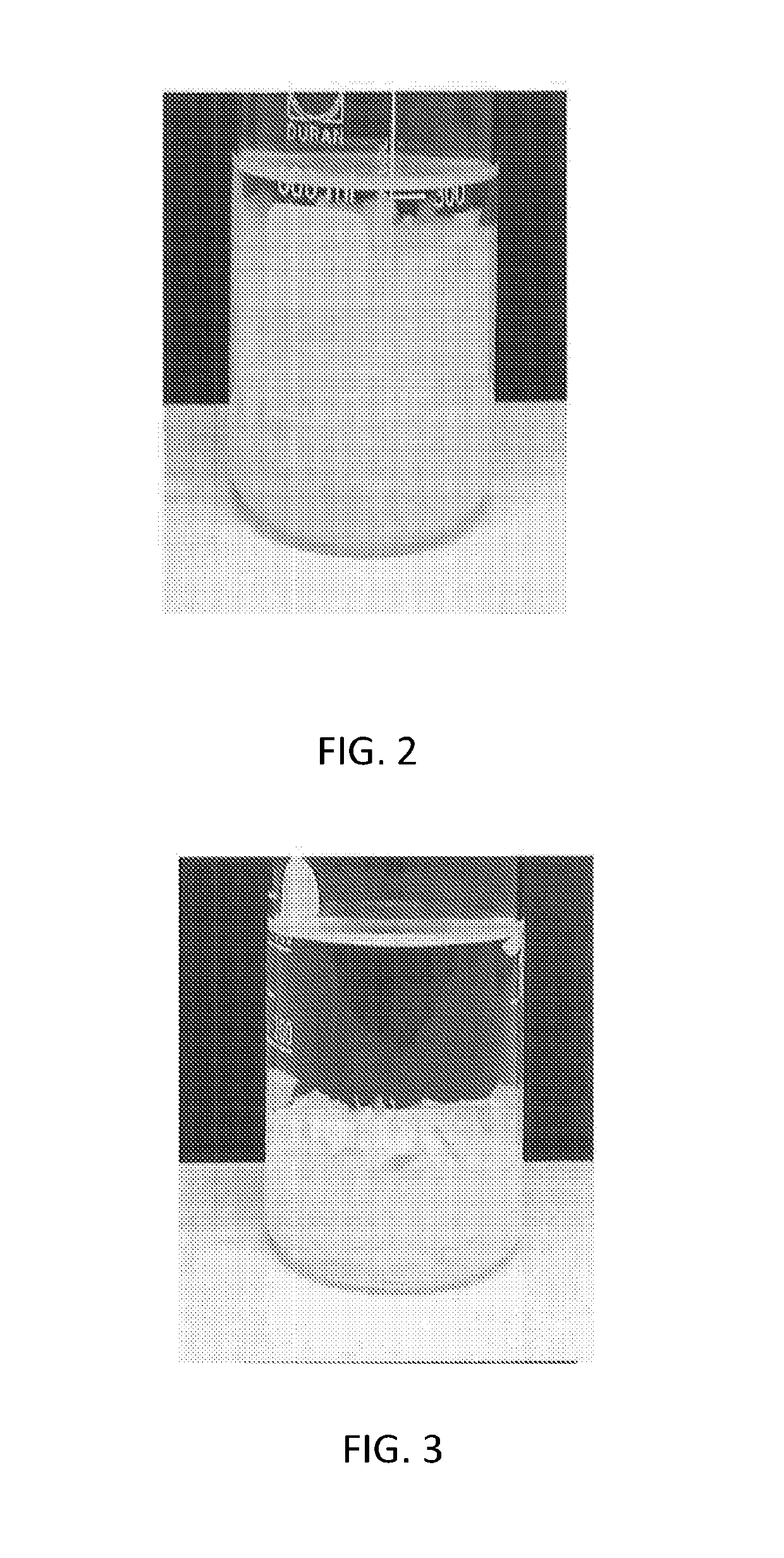Method of producing a carboxyalkylated NFC product, a carboxyalkylated NFC product and use thereof
a technology of nfc and carboxyalkylated cellulose, which is applied in the direction of paper/cardboard, paper forming aids addition, textiles and paper, etc., can solve the problems of limited charge density, less attractive route, and significant challenge, and achieves a higher degree of fibrillation and improved re-dispersion properties.
- Summary
- Abstract
- Description
- Claims
- Application Information
AI Technical Summary
Benefits of technology
Problems solved by technology
Method used
Image
Examples
examples
[0051]Samples of nanofibrillated cellulose (NFC) modified using monochloroacetic acid (MCA, comparative example) and 2-chloropropanoic acid (CPA) were prepared by the method described below. The samples were then dried and redispersed in water by the method described below. Various properties of the never-dried NFCs (termed N.d.) and redispersed NFCs (termed Redisp.) were then determined by the methods described below.
[0052]Preparation of Samples and Test Methods
[0053]Carboxyalkylated Nanofibrillated Cellulose
[0054]A commercial never-dried TCF-bleached sulphite dissolving pulp (trade name: Dissolving Plus) from a mixture of Norway spruce (60%) and Scottish pine (40%) was obtained from Domsjö Fabriker (Domsjö Mill, Sweden). Never-dried fibres were dispersed in water at 10000 revolutions using an ordinary laboratory blender. This was conducted in smaller batches of 30 grams of fibres in two liters of water. The fibres were then solvent-exchanged to ethanol by washing the fibres in one...
PUM
| Property | Measurement | Unit |
|---|---|---|
| Temperature | aaaaa | aaaaa |
| Percent by mass | aaaaa | aaaaa |
| Diameter | aaaaa | aaaaa |
Abstract
Description
Claims
Application Information
 Login to View More
Login to View More - R&D
- Intellectual Property
- Life Sciences
- Materials
- Tech Scout
- Unparalleled Data Quality
- Higher Quality Content
- 60% Fewer Hallucinations
Browse by: Latest US Patents, China's latest patents, Technical Efficacy Thesaurus, Application Domain, Technology Topic, Popular Technical Reports.
© 2025 PatSnap. All rights reserved.Legal|Privacy policy|Modern Slavery Act Transparency Statement|Sitemap|About US| Contact US: help@patsnap.com


